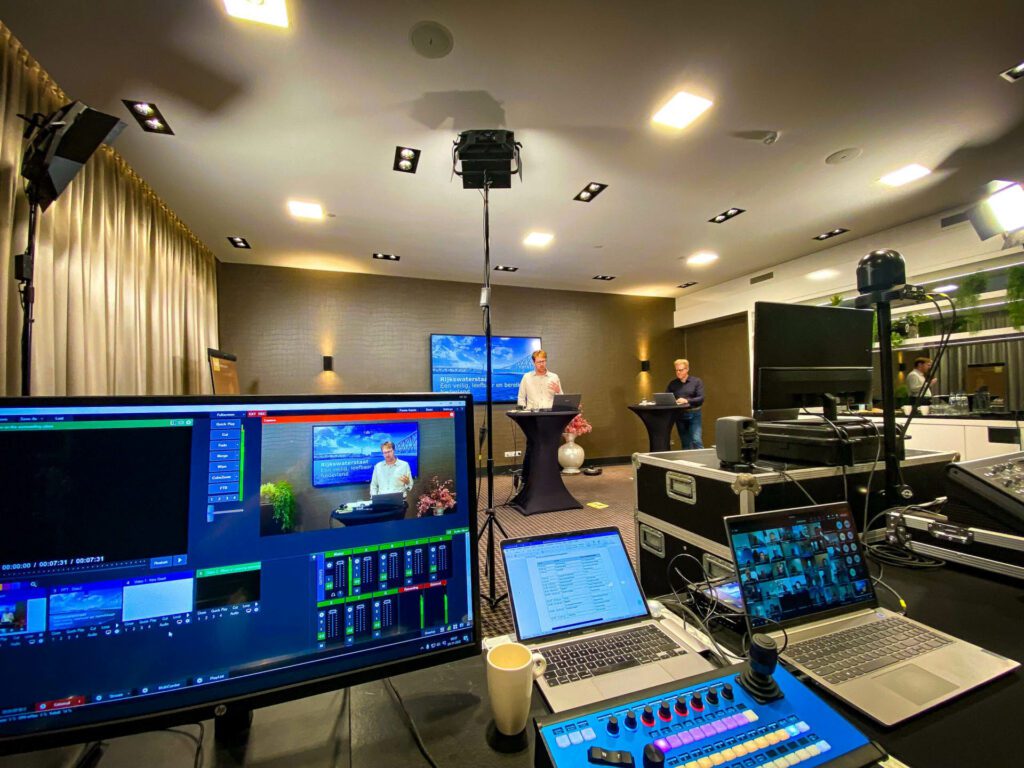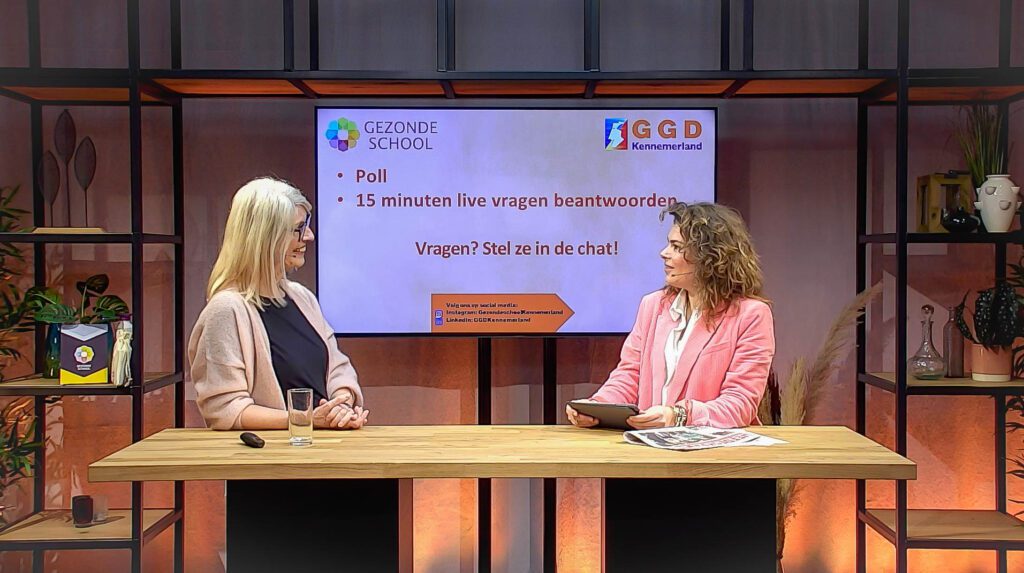Webinars are popular tools for sharing knowledge and promoting a brand. However, organizing a successful live stream or webinar requires some preparation and attention to detail. In this white paper, we provide some important tips for organizing successful webinars.
Step 1: Preparing for your webinar
Good preparation is essential for hosting a successful webinar. It is important to clearly define the purpose of livestream and who the target audience is. This helps in developing the proper program and selecting the right speakers or experts. When developing the program, consider the specifics of an online event, such as the duration of the event and the opportunities for interaction. For example, make sure you use interactive tools, such as polls, quizzes and live Q&As, to increase participant engagement and encourage interaction. Also, don't make your livestream or webinar too long.
Step 2: Choose an online platform for your webinar
Choosing the right online platform is essential to the success of your livestream or webinar. There are several platforms available, including livestreaming platforms, conferencing software and turnkey event platforms. Each platform has its own advantages and disadvantages, and it is important to choose the one that best suits your goals and budget.
Livestreaming platforms such as YouTube and Vimeo allow for easy streaming to a large audience and usually have good video quality. This is a good option if you want to reach a large audience, such as at a public conference or presentation. They usually offer the ability to chat, ask questions and respond to the presentation.
Meeting software such as Zoom and Microsoft Teams are more focused on participant interaction. It is possible to ask questions live with audio and video or have a discussion with participants. Of course, they also offer the ability to chat. This is a good option if you want to organize a more interactive event, such as a workshop or training.
Off-the-shelf event platforms offer the ability to host an entirely online event. They often have features such as virtual booths, networking opportunities and interactive workshops. This is a good option if you want to host a larger event, such as a conference or trade show.
When choosing the right online platform, it is important to consider several factors, such as the number of participants, the desired interaction and the available technology. At The Productioneers, we have extensive experience with different online platforms and are happy to advise you on which platform is best suited for your event.
Step 3: The technical aspects of a webinar
Technology is a crucial part of a successful webinar. Provide the right equipment, such as professional cameras, microphones and lighting, to ensure that the event runs smoothly technically. It is also important to ensure a reliable Internet connection and to test that the technology is working properly before the event begins. In addition, make sure the decor and furnishings match the style of the event and provide a professional appearance.
An example of equipment you need for a successful livestream are:
- A good camera that gives sharp image and is stable.
- A microphone that provides clear sound without noise or echoes.
- Good lighting so that the speaker is well portrayed.
Nowadays, most laptops and phones have a decent camera and microphone, but these are mainly for online meetings and not for professional webinars. Using professional equipment can improve the quality of the event and provide a professional appearance.

When organizing a webinar, it is also important to think about who is responsible for the technology. If you have to focus on both the technology and the content of the presentation during the webinar, it can be at the expense of the content and overall quality of the webinar. If you are not experienced in organizing a live stream or webinar, it is advisable to work with a professional party that has the right technology and makes sure everything runs smoothly during your broadcast. This will allow you to fully concentrate on the content and interact with the participants.
At The Productioneers, we have experienced technicians in-house who are responsible for technology during your webinar. This way, you don't have to worry about the technical aspects and can fully concentrate on the content and interaction with the participants.
Step 4: Promoting your webinar
To reach a large audience, you need to promote the event. There are several ways to promote your livestream or webinar, including social media, email marketing and paid advertising. Make sure you know your target audience well and use the right channels to reach them. In addition, make sure to make sure you have a clear call-to-action.
It is also important to think about how participants can register for the event. Do you want to open the webinar to everyone or do you want participants to register first? Registration has the advantage that you have a good idea of the number of participants in advance, and you can inform participants in advance about such things as the agenda and technical details.
Create a landing page where interested parties can register for your event. This page should clearly state what participants can expect from the event, and what they need to do to participate. Also use the landing page to inform participants of any technical requirements, such as the browser to use and the need to download certain software.
Share the event on social media and in newsletters to reach your target audience. Be sure to share your messages in a timely manner and repeat the message if necessary. Make use of the teaser video and landing page.
Step 5: Conducting your webinar
During the webinar, there are several tasks that need to be completed. Make sure everything runs smoothly during the livestream and that participants have a positive experience. During the webinar, monitor if everything is going well technically and respond to any questions participants may have. Use interactive tools, such as polls, quizzes and live Q&As, to increase participant engagement and encourage interaction. Make sure these are started at the right time and that results are fed back to participants.
During a good webinar, there are several tasks that must be performed. These include hosting the session, managing the technology and answering questions from participants. Make sure you have a good plan for how you will perform these tasks, and that you are trained on the technology used.
Before the event begins, check that all technology is working properly and that you have all necessary materials on hand. It is wise to be present well before the start time to resolve any problems.
During the event, you can encourage participants to actively participate. This can be done, for example, by asking questions, organizing polls or facilitating discussions. Also use multimedia, such as videos and images, to make the presentation more lively.
Answering questions from participants is also an important part of the event. Make sure there is a moderator or presenter who keeps an eye on the questions and answers them in a timely manner. This will make participants feel involved and valued.

Your webinar live from a studio?
Studio The Productioneers is the perfect location for your webinar or live stream. Our studio is fully equipped and offers a professional and contemporary feel. Whether it's a business presentation, talk show, webinar or panel discussion, our studio has everything you need for a successful webinar. We offer full support and guidance, with a dedicated project manager who is happy to think with you about the shape and content of your online event. So you are completely unburdened and assured of a successful webinar.
Step 6: Evaluation and follow-up
Measuring the success of the livestream or webinar is important to determine how to improve it in the future. Analyze statistics from the event to see what worked well and what could be improved. After the event, send a thank you email to participants with a link to the event recording and send a follow-up email to thank them and invite them to future events.
Hosting a successful livestream or webinar requires some preparation and attention to detail, but can be a great way to share your knowledge and promote your brand. At The Productioneers, we have all the necessary knowledge and materials to help you organize a successful livestream or webinar. We are happy to advise you on how best to display an online event and how to make the right choices for your goals. Feel free to contact us to learn more about our services and how we can help you organize your next event.
Let's Talk
Ready to make your next webinar a success? Contact us today and find out how The Productioneers can unburden you and together we can create an unforgettable production.
